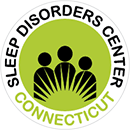Restless Legs Syndrome & Periodic Limb Movement Disorder
Restless legs syndrome (RLS) is a disorder that often occurs in otherwise healthy individuals. It is characterized by discomfort in the lower limbs while at rest, usually just prior to sleep or during periods of wakefulness at night. People often describe the discomfort as an aching pain, or as a “tingling” “creeping/crawling” or other bothersome sensation. RLS is more common in older people, but can occur in young adults as well.
People who suffer from RLS often report difficulties falling sleep or staying sleep. These difficulties may range from mild to severe, but in many cases result in significant nighttime distress and daytime fatigue. Sufferers often report the problem of “insomnia” to their doctors; however, it is important to distinguish RLS from primary insomnia because the treatments are totally different. RLS does not improve with conventional treatment for “insomnia”.
One interesting fact about RLS is that symptoms usually occur when the patient is at rest, but are not present during period of activity. Therefore, people with RLS often report that the discomfort in their limbs goes away if they get out of bed and walk about. Even non-physical activity can seemingly reduce the symptoms of RLS.
Treatment of RLS can begin at home. Many people find relief from massage, applied heat, or hot baths before bedtime. A number of medications are approved and are found to be effective and safe in the treatment of RLS.
Periodic Limb Movement Disorder
Periodic limb movement disorder (PLMD) is a condition in which brief movements of the lower limbs occur repetitively during sleep. These movements usually last between a half second and five seconds. And repeat once or twice per minute for long stretches of the night. Movements can be mild, such as the movement of a toe, or severe, such as a powerful leg jerk or kick. Some sleepers have reported that they have literally caused black and blue to their spouses from kicking while sleep.
PLMD is rare in people under 30 years of age and is more common in older people. Many people with this condition are unaware of the problem, unless they also have RLS. Therefore a common report from the people from PMLD is difficulty falling asleep and/or staying asleep. Since the movements associated with PLMD disrupt sleep and prevent the sleeper from enjoying deep, restful sleep, the sufferer also often feels that sleep is not restorative and restful.
The treatment of PLMD usually involves the use of medications that act on the neurotransmitter “dopamine.” Treatment of underlying cause of PLMD, such as iron deficiency, also provides relief. You may refer your patient to a sleep laboratory for overnight evaluation in order to make the diagnosis of RLS or PLMD, and to help determine an appropriate treatment plan.
